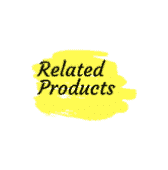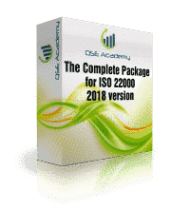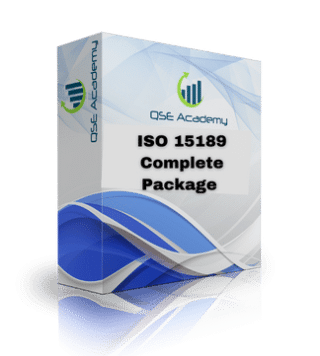ISO 15189 2022 Package
2025-03-25 14:24ISO 15189 2022 Package


ISO 15189 Documentation Package
2022 version



Price : 589 $
Accreditation Made Simple and Accessible for Your Business
If you’re running a medical laboratory, chances are you’re always looking for ways to improve your processes and demonstrate compliance with international standards.
That’s where the ISO 15189 Documentation Package comes in.
This package includes all the essential documents you need to achieve ISO 15189 accreditation, the international standard that sets requirements for the competence and quality of medical laboratories.
So why wait? Get started today and take the next step toward ISO 15189 accreditation!

Why start with a blank page. Start your Project TODAY, and save up to 80% on your time and money.

This package comes with 1 hour Live 1-to-1 Online Session with ISO consultant, document reviews, continual email support for 12 months and regular update service.

Cost-Effective Implementation: Much cheaper than an on-site consultant, and requires much less time than doing it from scratch
ISO 15189 Documentation Package 2022 Version
• Added Value: All ISO 15189 2022 requirements have been developed into an efficient process that adds operational value to your Laboratory and consequently increases productivity.
• Effective: Minimal effort is required to follow procedures necessary to meet all requirements of ISO 15189 2022 version.
• Simplified: Bureaucracy and excessive paperwork have been eliminated from each process to make it easy – while remaining fully compliant with ISO 15189 2022.
Start your Project TODAY, and save up to 80% on your time and money.
The all-in-one ISO 15189 Documentation Package 2022 Version
Save time, save money and simplify the accreditation process.
Documents included:

Procedures
- Impartiality Procedure
- Confidentiality Procedure
- Patient Feedback and Complaint Handling Procedure
- Examination Request Management Procedure
- Sample Collection and Handling Procedure
- Sample Transportation Procedure
- Nonconforming Work Procedure
- Document Control Procedure
- Record Control Procedure
- Risk and Opportunity Management Procedure
- Corrective Action Procedure
- Internal Audit Procedure
- Management Review Procedure
- Method Validation and Verification Procedure
- Equipment Management Procedure
- Equipment Calibration and Maintenance Procedure
- Reagent and Consumable Management Procedure
- Data and Information Management Procedure
- Emergency Preparedness Procedure
- Staff Competence and Training Procedure

Plans
- Risk and Opportunity Management Plan
- Training and Development Plan
- Equipment Maintenance and Calibration Plan
- Emergency Preparedness Plan

Manual and Policies
- ISO 15189 Quality Manual
- Quality Policy
- Confidentiality Policy
- Impartiality Policy
- Non-Discrimination Policy
- Continuous Improvement Policy

Records
- Examination Request Form
- Sample Collection Checklist
- Sample Transport Log
- Nonconformance Report Form
- Corrective Action Request Form
- Risk Assessment Form
- Internal Audit Report Form
- Management Review Input and Output Form
- Equipment Maintenance Log
- Calibration Record Form
- Training Attendance and Competency Assessment Form
- Reagent and Consumable Receipt and Testing Form

ISO 15189 Documentation Requirements Explained
The ISO 15189 Documentation Package is a must-have for medical laboratories seeking compliance with ISO 15189:2022, the international standard that defines requirements for the competence, impartiality, and consistent operation of medical laboratories.
Comprehensive and well-structured documentation is key to ensuring accurate, reliable, and internationally recognized laboratory testing and diagnostic services. From quality management to patient safety, having robust documentation enhances operational efficiency, regulatory compliance, and accreditation success.
Why ISO 15189 Documentation Matters
Proper documentation plays a crucial role in maintaining the integrity, accuracy, and traceability of your medical laboratory’s operations. It serves as a structured roadmap for ensuring consistent diagnostic testing, patient safety, and compliance with international accreditation requirements.
This package includes:
Key ISO 15189 Documentation Categories
| Document | Purpose in Medical Laboratory Operations |
|---|---|
| Quality Manual | Defines laboratory policies, quality objectives, and operational framework |
| Pre-Examination, Examination, and Post-Examination Procedures | Standardized steps for sample handling, testing, and reporting |
| Equipment Calibration and Maintenance Records | Ensures the accuracy and reliability of laboratory instruments |
| Personnel Competence and Training Records | Maintains staff qualifications, training, and ongoing competency assessments |
| Patient Test Reports | Documents test results with required clinical interpretations and traceability |
| Non-Conformity and Corrective Action Reports | Identifies deviations in testing processes and required improvements |
| Internal Audit and Management Review Records | Demonstrates continuous improvement and compliance with ISO 15189 requirements |
Core ISO 15189 Documentation Requirements
Management System Documentation
To comply with ISO 15189:2022, medical laboratories must maintain a structured management system that ensures competence, impartiality, and consistent diagnostic accuracy. Essential documents include:
- Quality Manual – Outlines the laboratory’s management system, scope, and policies for ensuring diagnostic quality.
- Policies & Standard Operating Procedures (SOPs) – Define laboratory operations, from patient sample collection to result reporting.
- Risk and Opportunity Management Procedures – Identifies and mitigates risks affecting patient safety and diagnostic accuracy.
- Impartiality and Confidentiality Documentation – Ensures the laboratory operates independently and protects patient information.
Medical Laboratory Testing and Diagnostic Documentation
Clear and well-documented processes ensure transparency, consistency, and compliance. This package includes:
- Pre-Examination Procedures – Guidelines for patient identification, sample collection, transport, and storage.
- Examination and Testing Procedures – Validated methodologies for conducting accurate medical tests.
- Measurement Uncertainty and Traceability Records – Ensures the reliability and consistency of laboratory results.
- Post-Examination Procedures – Defines reporting, result interpretation, and communication with healthcare professionals.
- Corrective and Preventive Action Procedures – Guidelines for addressing non-conformities and improving processes.
Equipment and Resource Management Documentation
- Equipment Calibration and Maintenance Logs – Ensures laboratory instruments meet accuracy requirements.
- Reference Material and Traceability Records – Maintains links between measurement results and national/international standards.
- Environmental Condition Monitoring Records – Ensures compliance with laboratory conditions affecting test accuracy and reliability.
Legal and Contractual Documentation
- Service Agreements with Healthcare Providers – Defines laboratory responsibilities, confidentiality, and terms of service.
- Confidentiality and Impartiality Declarations – Ensures staff and management uphold independence in laboratory testing.
- Liability and Insurance Documents – Provides proof of coverage for laboratory services.
Continuous Improvement and Compliance Documentation
ISO 15189:2022 requires medical laboratories to document continuous improvement, internal audits, and corrective actions. This includes:
- Internal Audit Reports – Demonstrates compliance with ISO 15189 requirements.
- Management Review Reports – Evaluates laboratory performance, risks, and improvement opportunities.
- Change Management Documentation – Handles revisions to testing procedures, policies, and standards.
Ensure Compliance with ISO 15189:2022 Today!
Achieving ISO 15189:2022 accreditation can be complex, but with the ISO 15189 Documentation Package, your medical laboratory will have everything needed to streamline compliance and ensure internationally recognized diagnostic testing processes.
💡 Get started today and take your medical laboratory to the next level with a structured, compliant, and efficient management system!

30 Days Money Back Guarantee
If for whatever reason during the FIRST 30 days of your purchase, you are not satisfied for any reason, simply contact support@qse-academy.com and our support team will issue you an immediate and full refund.
The package includes all the documents you need to comply with ISO 15189 2022 – these documents are fully acceptable by the accreditation audit.

All documents are in MS Word or MS Excel, to make them very easy to customize for your business. You can customize them by adding company logos and colors, and edit headers and footers to match your favorite style.

We have already completed about 90% of the information requested on the documents. To complete them you must fill in only the name of the company, the responsible parties, and any other information unique to your company. you will be guided through the process, commenting on the elements that are needed and those that are optional.

All the documents are made so that you can follow the proposed order perfectly, which allows you to make sure that nothing is missing, and that no one gets lost in the process.
The included comments and flowcharts help your staff understand each document and its usefulness, which helps you to make quality management more fluid, and processes easier to follow.
Features of the ISO 15189 Documentation Package
Price: 589 $
– Documentation included: 33 documents for the implementation of ISO 15189
– Language: English
– Documents are fully editable – just enter the information specific to your business.
– Acceptable for the ISO 15189 2022 accreditation audit? Yes, all the documents required by ISO 15189 2022 are included, as well as the quality policy and the current but optional procedures.
Instant Delivery – The package is downloadable immediately after purchase
Free Consultation – In addition, you can submit two complete documents for review by professionals.
Created for your business – The models are optimized for small and medium businesses.


ISO 15189 Documentation Package 2022 Version
The complete kit to implement ISO 15189
Price : 589 $
What our customers think:

“We successfully achieved ISO 15189 accreditation thanks to this detailed and easy-to-follow documentation. It streamlined the process, saved significant time, and reduced stress for our entire team.”
Rachel T.
Laboratory Director


The templates provided were comprehensive and straightforward, saving us months of preparation. Implementing ISO 15189:2022 requirements has never been easier
Michael P.
Quality Manager

Frequently Asked Questions
How long will it take to receive the complete package of documents after I place my order?
Upon completing your purchase, you will be redirected to the download page immediately. Additionally, a link to access your file will be sent to your email. The files are provided in a .zip format, which you will need to extract. If you encounter any issues with the download, please do not hesitate to contact us at support@qse-academy.com. Our support team is always ready to assist you.
What payment methods can I use?
We offer several payment options for your convenience. You can choose to pay using a credit card, debit card, or PayPal. Additionally, we provide a flexible layaway plan for those who prefer to pay for their purchase over time. If you have any questions about our payment options, please don’t hesitate to contact us.
Do you offer a money-back guarantee if I'm not satisfied with the service?
We offer a 30-day money-back guarantee. If you are not satisfied with our service for any reason, you can cancel within the first 30 days and receive a full refund, no questions asked.
Is there ongoing support or assistance available after my purchase?
Yes! At QSE Academy, our ISO experts provide continued support by answering your queries via email. You can expect a detailed response within 24 to 48 hours to help you move forward confidently.
Are updates to the documentation package included after purchase?
Absolutely. To ensure your documentation remains reliable and compliant, we update our packages every 6 months. Existing customers receive these minor updates at no extra charge. However, when there’s a major revision of the ISO standard itself, you’ll need to purchase an updated kit to align with the new standard.
Will I receive a valid invoice for my business expenses after completing the purchase?
Yes. After completing your purchase, you’ll immediately receive a valid invoice suitable for business and tax purposes. If you require any specific adjustments or details added to your invoice, please reach out to our support team.
Can I customize these documents for my company's specific needs?
Yes, the documents are fully customizable! You can easily edit, modify, and add your company’s logo to tailor them specifically for your organization. Additionally, if you’d prefer assistance, we offer a personalized “Done-For-You” customization service to deliver audit-ready documents tailored exactly to your organization’s requirements.
How quickly can I implement this ISO standard using your documentation?
Implementation time varies depending on your company’s engagement, resources, and experience. Typically, we’ve observed businesses successfully achieve compliance and certification within 3 to 6 months using our clear, structured documentation packages.
Do these documents guarantee successful certification?
While our documentation packages significantly simplify the certification process, the ultimate success of ISO certification depends on effective implementation. For organizations seeking further assurance, we also provide comprehensive support services, including guided implementation and internal audits, to help you confidently pass your certification audit.
Do you offer hands-on assistance if I need extra help during implementation?
Definitely! If you prefer a complete, hands-off solution, we offer a premium “Done-For-You” implementation service. Our ISO experts handle the full preparation, providing you with audit-ready documentation and detailed implementation support. You simply adopt the customized materials, follow the tailored guidelines, and confidently pass your audit.







